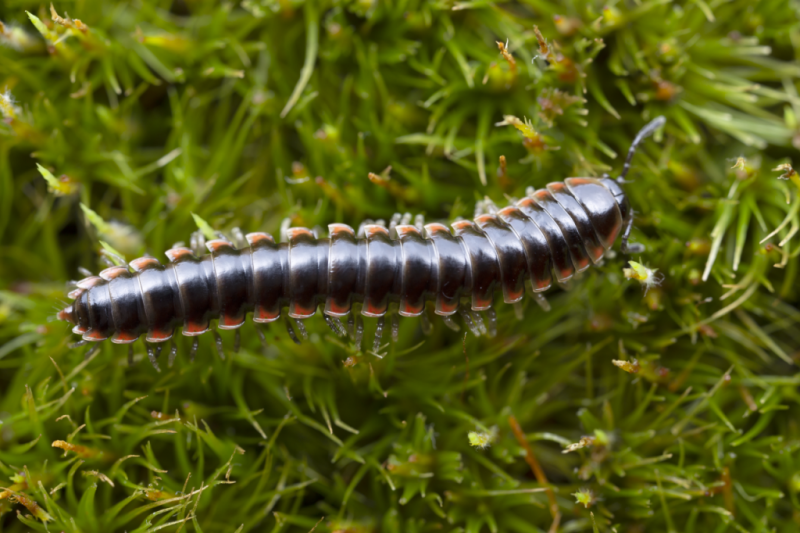
Hearing the words “new species discovered” may conjure images of deep caves, uncharted rainforests, or hidden oases in the desert.
But the reality is that thousands of new species are discovered each year by enterprising scientists all over the world. Many of these new species do come from exotic locations, but more surprisingly, many come from just down the road, including the newest member of the Hokie Nation, the millipede Nannaria hokie.
The newest Hokie — which has about 60 more legs than the HokieBird — was discovered living under rocks by the Duck Pond behind the Grove on Virginia Tech’s Blacksburg campus. Since then, the critter has been found at the area commonly referred to as stadium woods and in town in Blacksburg as well.
“It’s not every day that we find new species, let alone on our campus, so we wanted to name the new species for the Virginia Tech community and to highlight the importance of conserving native habitat in the region,” said Paul Marek, a systematics and taxonomy associate professor in Virginia Tech’s Department of Entomology in the College of Agriculture and Life Sciences.
Nannaria hokie (pronounced nan-aria ho-key) is about 2 centimeters long and is a dark reddish millipede with yellow-white highlights (apologies to those who thought it would be maroon and orange). These creatures are roughly the size of a penny and usually find their home under rocks, leaves, and among other forest floor debris. The common name “Hokie twisted-claw millipede” comes from the presence of twisted claws on their feet before their reproductive organs.
Millipede biodiversity is the primary focus of Marek’s lab, which investigates habitats all over the world, including Vietnam, Japan, and the United States. Marek, recent entomology graduate Jackson Means, and other co-authors recently published a paper in the journal “Insect Systematics and Diversity,” that describes 10 new species of millipedes, including the Hokie twisted-claw millipede, which was found only a stone’s throw from Marek’s lab window.
The announcement of these new species speaks to the biodiversity that has yet to be discovered, not just in far off exotic locations, but in your backyard.
“Millipedes are surprisingly abundant and diverse yet have thus far avoided major attention from both the scientific community and the public,” Jackson said. “I guarantee that if you just go out into a forest near your home and start looking under leaves you will find several species of millipede, some of which will likely be large and colorful.”
Millipedes are a unique group of arthropods that are characterized by having two pairs of jointed legs on most segments of their bodies. For anyone who may have turned over a rock in the dirt, the shiny exoskeleton of these types of arthropods should be familiar. These critters boast an incredible amount of biodiversity and have many fascinating and unique traits; some have bright colors, some glow in the dark, and some can even exude cyanide in self-defense. Most millipedes are known as detritivores, or decomposers, and feed on decaying plant matter on forest floors.
Including the Hokie millipede, the publication goes on to detail nine other millipedes, all native to Appalachian forests. As the scientists who discovered these arthropods, the Marek lab had the honor of naming these new species, including references to Virginia Tech alumnus and arachnologist Jason Bond (Appalachioria bondi), alumna Ellen Brown (Appalachioria brownae), and even one named after Marek’s wife Charity (Rudiloria charityae). This millipede he named for his wife after he found it while taking a quick stroll with family before their wedding by the Chagrin River where he grew up in northeastern Ohio.
Millipedes have existed far longer than humans have and represent some of the first land animals discovered by scientists in fossil records. Their role as detritivores is crucial to forest ecosystems, and the primary role of millipedes in this environment is to break down plant matter into smaller material, so that bacteria and other smaller organisms can continue to recycle the material into the soil and make its nutrients available for future generations of life.
Despite an ancient lineage and a plentiful food source, the threat of extinction is very real for many millipede species. Millipedes typically remain confined to select, relatively small geographical regions, due to their limited mobility and their dependency on specific habitats. As such, changing climate and habitat destruction is highly threatening to the survival of these organisms.




